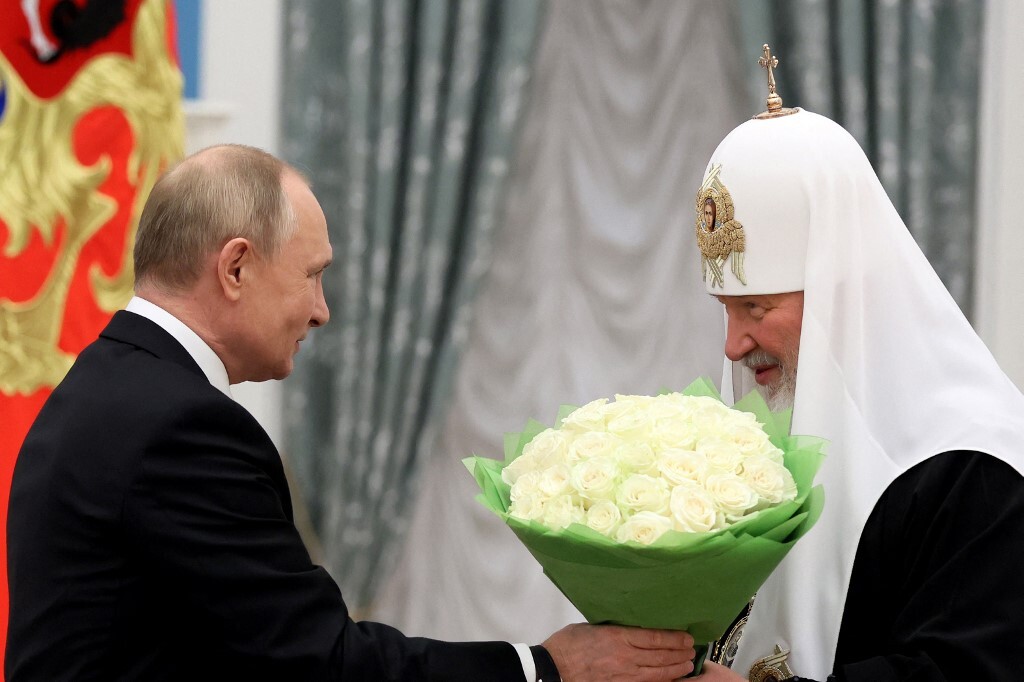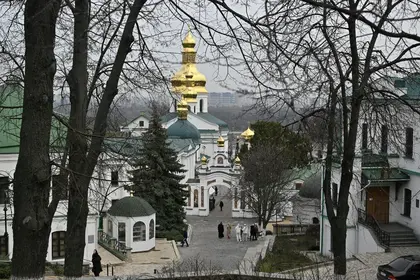1. Dating from the 11th century, the Kyiv Pechersk Lavra (or “cave monastery”) is considered to be one of the most sacred religious sites in Ukraine. The UNESCO-recognised site is owned by the Government of Ukraine as a national reserve and much of it has long been open to the public; since 2013, the Ukrainian Orthodox Church - Moscow Patriarchate (UOC-MP) has had a lease agreement to use part of the site for free as a monastery and as domicile for its senior hierarchy. There have been up to 100 UOC-MP monks on the site in recent times.
- Look at the most up-to-date Ukraine news that came out today.
- Russian Losses in Ukraine
2. Following a Ukrainian government investigation that identified and documented 36 illegally built structures on the site and damage to important cultural heritage, Ukraine’s Culture Ministry decreed on Mar. 10 that the UOC-MP was in breach of the terms of its lease agreement for the site and that UOC-MP must vacate the premises by Mar. 29. The UOC-MP maintains there is no legal basis for the termination of the agreement and eviction from the site.
JOIN US ON TELEGRAM
Follow our coverage of the war on the @Kyivpost_official.
3. This followed two other developments: a) in December, a Presidential decree banned the activities of religious organisations that are controlled by the Russian Federation, and; b) in February, an independent expert review commissioned by the Ukrainian government concluded that the UOC-MP remains a structural unit of the Russian Orthodox Church. The UOC-MP disputes that it is not autonomous. 78% of Ukrainians surveyed in December supported banning or curbing the activity of UOC-MP.

Trump Makes 90 Day Foreign Aid Freeze – Ukraine Military Support Supposedly Untouched
4. Most Ukrainian believers are of the overall Eastern Orthodox Christian faith, which is led by the Metropolitan of Constantinople, Bartholomew. Under the auspices of Eastern Orthodoxy, the second largest faith in the world, there are several Orthodox religious structures active in Ukraine. One is the Ukrainian Orthodox Church (UOC-MP). As noted, the UOC-MP is deemed a branch of the Russian Orthodox Church and is governed by a Moscow-affiliated patriarch. Another is the Orthodox Church of Ukraine (OCU-KP) which is governed by the Kyiv Metropolitan.
5. Both major Orthodox churches in Ukraine operate under the broader auspices of the Eastern Orthodox Church. The Eastern Orthodox Church is structured as a “fellowship” of largely autonomous Orthodox churches with each governed by a bishop and a synod, or, in the case of the Ukrainian churches, a “patriarch”. The Eastern Orthodox Church is distinct from the Catholic Church in not having a central governance or doctrinal authority, eg, the Pope. Rather the Metropolitan of Constantinople (or Ecumenical Patriarch) is considered “first among equals”.
6. The hierarchy of the UOC-MP has long cooperated with first the Soviet authorities and then the Russian authorities. This can be interpreted as either pragmatism to preserve faith structures or as collaboration with regimes of imperial and Russifying intent. Historically, the UOC-MP has antecedents dating from 1686, under Tsar Peter the Great, when the religious metropolis of Kyiv was transferred to Moscow and the Orthodox Church in Kyiv was fully absorbed by Russia.
7. The Patriarch of Moscow has been Kirill since 2009. Kirill has openly attempted to bring the Russian Orthodox Church closer to the Putin regime. In 2022, he lauded Russia’s invasion of Ukraine and was condemned by the Metropolitan of Constantinople for doing so. According to disclosed KGB files, and as reported by numerous Western media outlets, Kirill was at one point of his life an official KGB agent. Kirill’s stance has caused many individual church communities of the UOC-MP to either become independent or to migrate to the OCU-KP.
 Russia's President Vladimir Putin (L) congratulates Patriarch Kirill of Moscow and All Russia during a presentation ceremony for presenting Andrew the First-Called order in Moscow on November 20, 2021.Mikhail Metzel / SPUTNIK / AFP
Russia's President Vladimir Putin (L) congratulates Patriarch Kirill of Moscow and All Russia during a presentation ceremony for presenting Andrew the First-Called order in Moscow on November 20, 2021.Mikhail Metzel / SPUTNIK / AFP
8. In 2019, the Eastern Orthodox Church proclaimed a “tomos” that had the effect of recognising the OCU-KP as essentially the primary Orthodox church in Ukraine. This set the basis for the OCU-KP bringing under its governance – usually through votes by individual communities – local Orthodox churches, parishioners, structures and assets, including those previously under the control of the UOC-MP. Some 2000 UOC-MP parishes have migrated to the UOC-KP. That process has been peaceful.
9. The Ukrainian Government claims to have not formally ordered the monks of the UOC-MP to leave the site, but has said that UOC-MP senior leaders who have been responsible for illegal activities on the UNESCO-listed site should leave.
10. Some 500 Ukrainian religious churches and institutions have been destroyed by Russian forces since the beginning of the full-scale invasion.
You can also highlight the text and press Ctrl + Enter










